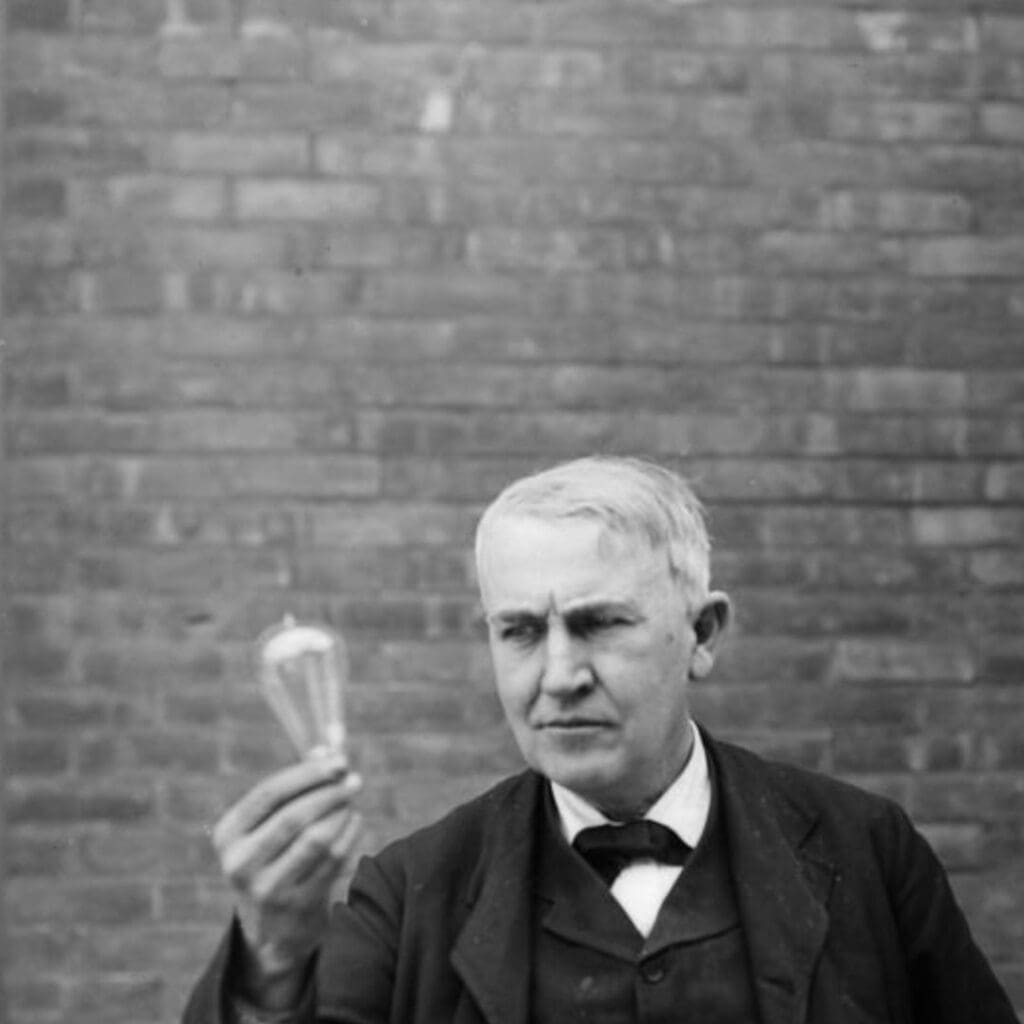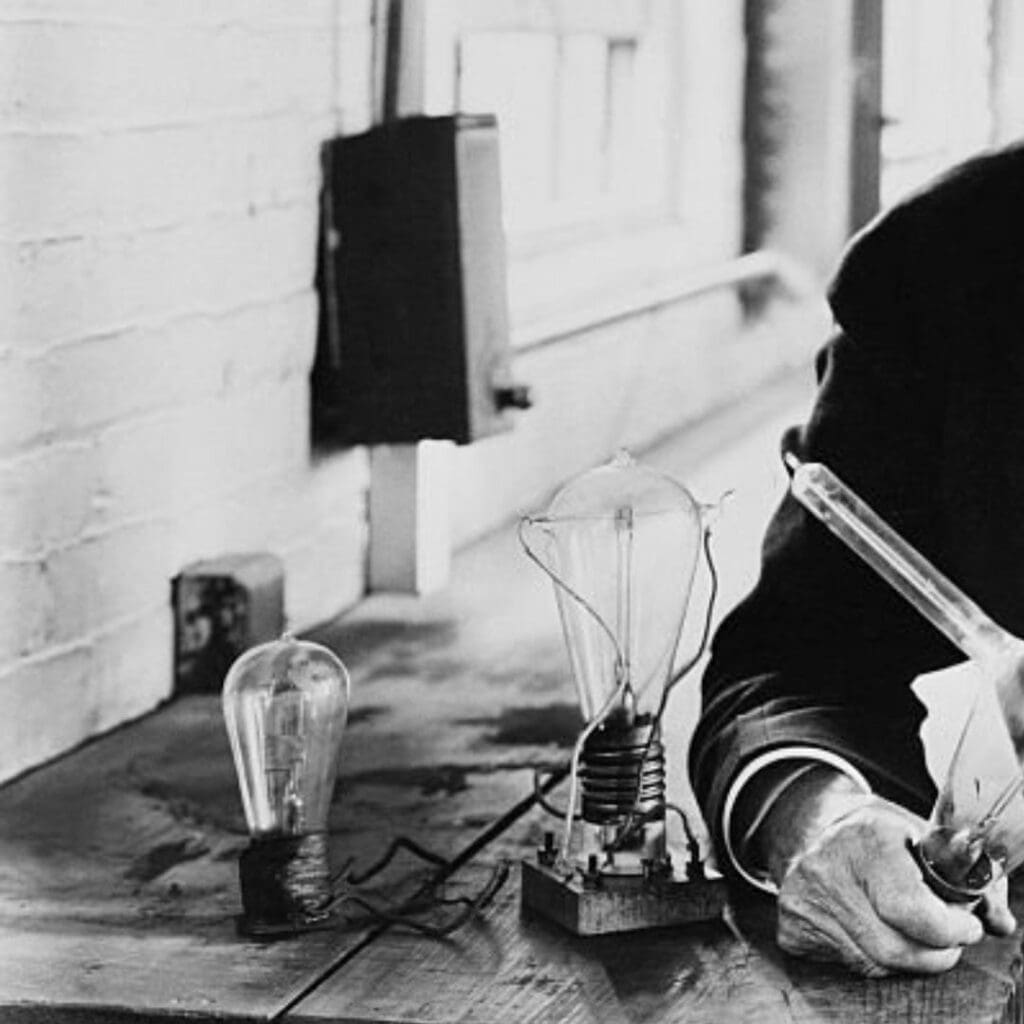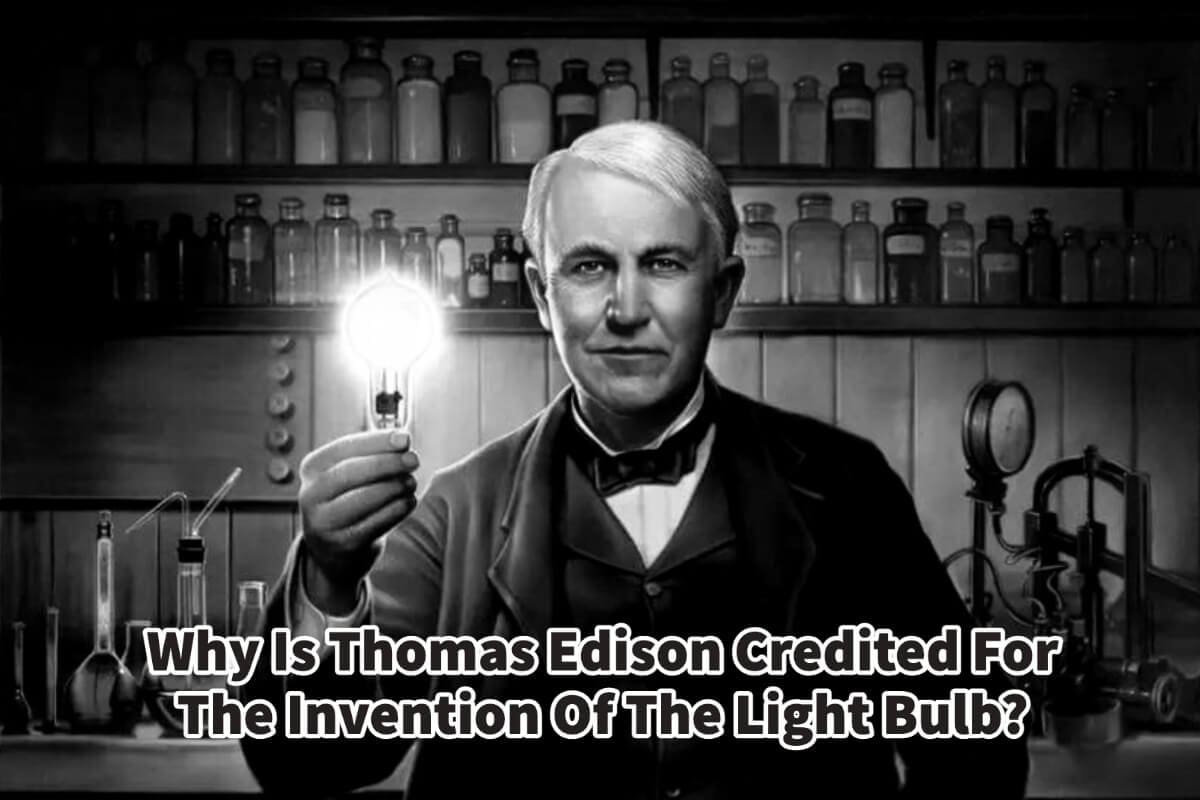Each time you turn on the light bulb, you may not think about who invented that or how the lightbulb came about. The light bulb is an example of an invention that changed the world in so many ways.
Thomas Edison did not invent the lightbulb. But he made many profound improvements to the lightbulb concept, so he is usually credited as the inventor of the lightbulb as we know it today. Thomas Edison gave us the shape and design of the light bulb. He also designed and improved the lightbulb socket, making it easier for people to change it.
Table of Contents
- About The Light Bulb Invention And Thomas Edison
- How Did Thomas Edison Improve Upon The Existing Lightbulb Design?
- Related Content
About The Light Bulb Invention And Thomas Edison
Since its invention over a hundred years ago, the light bulb has revolutionized. At the forefront of this innovation is Thomas Edison: he is credited as one of history’s most prolific inventors. Thomas Edison’s name has become synonymous with the invention of the light bulb.
Thomas Edison Did Not Invent The Lightbulb – He Improved Upon The Design
Thomas Edison is often credited with the invention of the light bulb, but he did not invent the light bulb. Instead, Edison improved upon existing lightbulb designs and developed a commercially viable version that could be mass-produced.
This was a significant development because electric lighting was not practical or safe for most people before Edison’s improvements. By providing a suitable and safe lighting solution, Edison made it possible for people to light their homes more cheaply and efficiently than ever before.
Thomas Edison’s Lightbulb Improvements Are One Of the History’s Most Influential Designs
Thomas Edison’s light bulb design improvements are often cited as one of the most significant historical events. The design ushered in an age of convenience and comfort that changed our lives today. Edison’s improved design became the basis for all light bulbs that came after it and is still used today, making him a true innovator and inventor.

Without his ingenuity and hard work, the world would look very different today. Edison’s contribution to society should not be understated, as it has made life easier in countless ways. He was an innovator who revolutionized the world, so his legacy continues for generations.
This is why Thomas Edison is usually credited for the invention of the light bulb, even though he was technically the first to think up the lightbulb. He did improve upon the design of the light bulb.
How Did Thomas Edison Improve Upon The Existing Lightbulb Design?

Thomas Edison is credited with inventing the first commercially practical incandescent light bulb. This design revolutionized the world by providing a reliable electric light source.
Here are some of the ways Edison improved upon the existing light bulb design:
Thomas Edison Developed A Long-lasting Filament
Thomas Edison developed a long-lasting filament that changed the lightbulb. Edison experimented with hundreds of materials to find a filament that would burn for many hours without breaking. In 1879, he finally found a suitable material for his filament: carbonized bamboo.
Thomas Edison used a carbonized thread made from a cotton-like plant fiber called bamboo. The carbon filament produced light by conducting electricity when heated and was more durable than the filament used in other light bulb prototypes.
Thomas Edison’s breakthrough in finding a suitable filament material contributed to the widespread adoption of incandescent lighting.

Thomas Edison Created A Vacuum Within The Bulb
Thomas Edison also created a vacuum within the bulb. Thomas Edison recognized that a vacuum inside the bulb would prevent the filament from burning quickly due to oxidation.
He spent months developing a vacuum pump to remove the air from the bulb and seal it.
Thomas Edison Improved The Lightbulb Glass
Thomas Edison Improved the quality of the glass bulb. Edison realized that a good-quality glass bulb was essential for the bulb’s success.
He experimented with different types of glass and eventually found a durable, heat-resistant glass that would withstand the high temperatures inside the bulb.
Thomas Edison Designed An Improved Socket
Thomas Edison designed a more practical and improved light bulb socket. Edisodevelopeded a socket that made installing and replacing the bulb easy. This innovation made the light bulb more accessible to the average person.
Edison’s improvements to the light bulb design paved the way for the widespread use of electric lighting, which profoundly impacted society. His advancements made the light bulb more efficient, safer, and longer-lasting; his innovations and design continue to influence the design of light bulbs today.
The improved light bulb design was an important invention in human history, enabling people to light their homes and businesses more effectively and efficiently. It changed life as we know it and made possible many of the modern conveniences we take for granted today.
Edison’s contributions to society were immense and will continue to live on, making him a true innovator. He is credited with the invention of the light bulb because his improved design was revolutionary and provided an effective and safe lighting solution that could be mass-produced. This was an essential milestone in history, and Edison’s work deserves to be remembered and celebrated.
Find out more about how Mondoro can help you create, develop, and manufacture excellent home decor and furniture products – don’t hesitate to contact me, Anita. Check out my email by clicking here or become a part of our community and join our newsletter by clicking here.
Mondoro gives out a FREE Lookbook to anyone interested. You can receive a copy of our latest Lookbook by clicking here.
Listen to our Podcast called Global Trade Gal. You can find it on all major podcast platforms. Try outlisteningn to one of our podcasts by clicking here.
Subscribe to our Mondoro Company Limited YouTube Channel with great videos and information by clicking here.
Related Content
Differences Between UL, CSA, and ETL Certifications
The UL, CSA, and ETL certifications are all tested and produced up to the same standard and testing; they are all certified for use in Canada and the United States. One of the significant differences between the UL, CSA, and ETL marks is that UL certification is the most highly recognized certification.
You can discover more by reading Differences Between UL, CSA, and ETL Certifications by clicking here.
How Underwriters Laboratories (UL) Make Money?
Underwriters Laboratories make money from contributions and grants, servicing and other fees, and investment income. When you view their tax returns, you can see that they make money through their servicing and fee structure.
You can discover more by reading How Underwriters Laboratories (UL) Make money by clicking here.
Is The UL Rating Acceptable In Canada?
The UL rating is only for the United States and is not used in Canada, but Canada does have a rating called ULC or cUL, which is essentially the same as UL but has been approved for Canada. Canada also has a CSA rating that is essentially the same as the cUL rating used in Canada.
To find out more about the Is The UL Rating Acceptable In Canada? by, clicking here.

